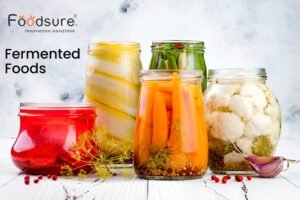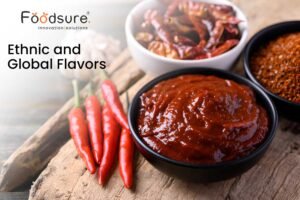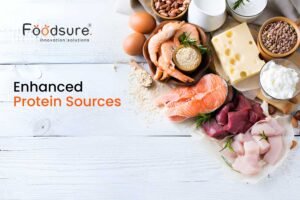Moving to 2025, it is clear that the food industry is full of innovative concepts that change the perception of food. New ideas are being produced in the food recipe development field, from using new and healthy ingredients to packaging that does not harm the environment, and from diverse and nutritious products to technology helping food production. Please find out how the market will evolve with the top 10 trends in food product development in 2025 that are expected to change how we consume food, shop, and even live. Prepare yourself for a ride of flavors, nutrition, and innovation like never before, and create your new product development in food.
🚀 Want Expert Help in Food Product Development?
Get instant guidance from Foodsure experts. Chat with us now on WhatsApp and kickstart your food business journey!
What Is Food Product Development?
Food product development refers to a multistage process required to bring a new or improved food product to market. In the food industry, it entails creating appealing foods that appeal to the target market and resolve the gaps in their current choices and needs.
Types Of New Food Product Development Services We Offer
➜ Custom food product development
➜ Brand New Product development in food
➜ Line Extensions
➜ Product Re-Engineering
➜ Fortified & Functional Foods development
➜ Clean Label & Natural Formulations
➜ Flavor & Texture Optimization
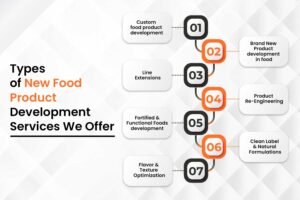
Read More: Best Food Consultant In Delhi NCR
Latest Innovations & Trends In Food Product Development
1. Plant-Based Innovations
There is already a noticeable increase in servings of vegetarian and vegan food products and general food items made from plant protein. According to a new report by Bloomberg Intelligence (BI), The plant-based foods market could make up to 7.7% of the global protein market by 2030, with a value of over $162 billion, up from $29.4 billion in 2020. Consumers can expect to find more innovations, such as products from plant-based seafood, plant-based dairy products, and gourmet plant-based meats.
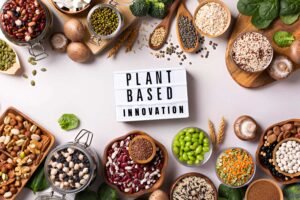
2. Functional foods in product development
There is a growing innovation in food product development, which involves food products that offer health benefits beyond traditional nutrition. Among the examples of product opportunities are vitaminized, mineralized, probiotics, and adaptogenic products. For instance, we have foods with probiotics for the gut and adaptogens for stress, getting to the markets. Specifically, global functional foods are expected to grow at a certain level.
Nutraceuticals
The nutraceutical trend demands functional new food product development ideas that can be used as a nutritional alternative and medicine. It leads to products like:
➜ Nutritional supplements
➜ Functional foods
➜ Medicinal foods
➜ Gut microbiome-enhancing foods (prebiotics, probiotics, and postbiotics)
➜ Antioxidant vitamins
➜ Dietary fiber
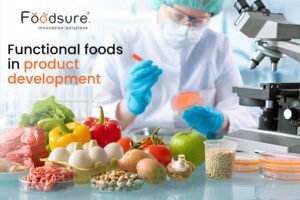
3. Food Waste Reduction and Sustainable Packaging
There are always increasing environmental concerns, which is why sustainable packaging is considered important in food recipe development. Viable products include using products like bio-degradable plastics, recycled papers, and compostable films. Coca-Cola and Unilever are just a couple of companies that have set themselves a high bar and are striving to make changes to reduce plastic use and make it more easily recyclable.
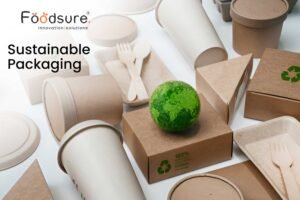
4. Introducing Smart Foods and AI integration
As for today, smart technology and artificial intelligence have played a significant role in the development of food. AI is also being used to predict the desired tastes or proportions of components and innovative beverages. With continued advancements in this line of AI, we can see more such applications and growth in the future in food production. This can be efficient, flexible, and in touch with consumers’ demands.
➜ Checking Production Quality
➜ Supply Chains Work
➜ Smart Marketing Ideas
➜ Predicting Product Demand
➜ Rising Technologies and New Companies
➜ Tracking Food Freshness with Technology
➜ How AI Helps Understand Consumers
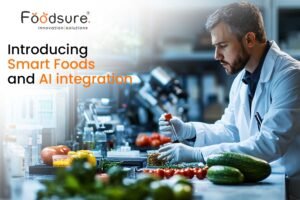
5. Low-Sugar and Natural Sweeteners
People are becoming increasingly conscious of their health, so there is a change towards low-sugar foods and natural sugars. Stevia, monk fruit, and date syrup are some examples of non-nutrient sweeteners that are becoming increasingly popular compared to other refined sugars. The sweeteners industry worldwide is expected to reach a projected revenue of US$97,572.3 million by 2030, as per the report by Grand View Research.
The demand for personalized food products that cater to consumers’ unique beliefs, dietary requirements, and lifestyles is on the rise.
One example that satisfies the higher demand and needs for personalized nutrition is 3D food printing.
There are popular products to explore in the personalized nutrition category:
➜ Plant-based meat
➜ Sugar-free items
➜ Gluten-free
➜ Vegan-friendly
➜ Clean Label food products.
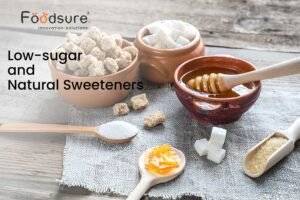
6. Fermented Foods
One of the popular trends is that fermented foods, which contain many probiotics, are becoming popular again. Drinks such as kombucha, foods like kimchi, and even raw cabbage products such as sauerkraut are trends that are being brought to the public due to the health benefits they have on the gut. According to research, the Fermented Food Market was valued at USD 578.1 billion in 2023.
7. Clean Label and Minimal Processing
Consumers continue to demand transparency and simplicity in food products. New products focus on minimal processing, fewer ingredients, and “clean” labels, emphasizing natural and recognizable components.
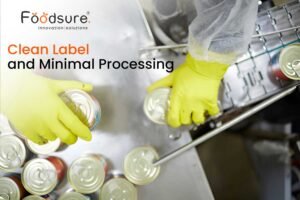
8. Ethnic and Global Flavors
Consumers are more experimental with their palates and open to ethnic and world flavours. With time, Ethiopian berbere and Korean gochujang are being incorporated into most products produced in the markets. This trend owes its existence to the growing interest in diverse food diets worldwide.
9. Health-Conscious Snacks
Increasing consumer concern about health is another aspect of the snacks market shifting towards low-sugar options with high protein content and healthy nutrients. Newbies are protein bars, vegetable chips, snacks, and keto snacks. Specialized food sales, such as snacks for a nutritious diet, are expected to show an 8% annual growth due to an increasing focus on global health.
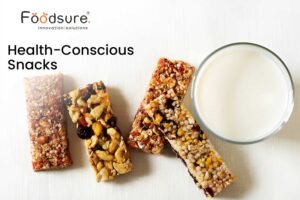
10. Enhanced Protein Sources
New, innovative protein sources are emerging, including insect-based proteins, algae, and fermented proteins. These are being incorporated into various food products like bars, shakes, and snacks, appealing to the environmentally conscious consumer.
➜ Plant-based nutrition
➜ Cultured meat
➜ Lab-grown meat
➜ Edible insects
➜ Mycoprotein
11. Protein-Based Food Product
The constantly increasing need for protein diets is becoming a stimulus for innovative progress in the field of food. Protein-rich snacks aren’t just for fitness fans anymore. They’re now popular with anyone who wants to eat healthier.
➜ Protein Bars: These snacks give you a quick energy boost and come in different flavors for all kinds of diets.
➜ Protein Puffs: Protein puffs are light, crunchy, and guilt-free snacks that provide extra nutrition.
➜ Plant-Based Protein: Utilizing ingredients like pea, soy, and chickpea protein, these options are ideal for consumers seeking sustainable and vegan-friendly alternatives.

Read more: Stages of New Food Product Development
Challenges Of Food Product Development
➜ Production Limitations
➜ Ingredient Sourcing and Costs
➜ Problems Encountered During Processing
➜ Teamwork and Communication Hurdles
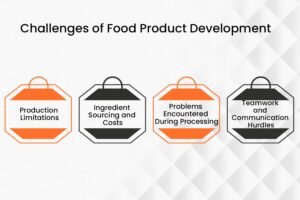
Read More: The Future Of Food Product Development and Innovation
Examples Of Our Food Product Development
➜ Cocktail Bomb Recipe formulation: Ethnic and Global Flavors
➜ Prebiotic Carbonated Drink Recipe Formulation: Enhanced Protein Sources
➜ Functional Foods product recipe formulation
➜ Nutraceuticals Recipe Formulations
➜ Protein Drink Recipe Formulation: Ethnic and Global Flavors
➜ Kombucha Drink Recipe Formulation: Fermented Foods And Drinks
➜ Soy Milk Recipe Formulation (Vegan): Plant-Based Innovation
Food Product Development Process
| Step No. | Process Stage | Description |
|---|---|---|
| 1 | Project Briefing & NDA | Understanding client requirements, signing NDA for confidentiality. |
| 2 | Market Research & Feasibility Study | Analyzing market trends, competitor benchmarking, and the feasibility of the product. |
| 3 | Formulation & Ingredient Selection | Developing the product recipe with approved ingredients and nutritional profiling. |
| 4 | Prototype Development & Trials | Creating product samples, conducting sensory evaluations, and refining the formulation. |
| 5 | Regulatory & Compliance Checks | Ensuring adherence to FSSAI, FDA, and other relevant food safety regulations. |
| 6 | Packaging & Shelf-Life Testing | Selecting appropriate packaging, testing shelf-life, and ensuring product stability. |
| 7 | Pilot Production & Process Optimization | Small-scale production runs to optimize the manufacturing process. |
| 8 | Final Testing & Validation | Conducting microbiological, physicochemical, and sensory testing before finalizing. |
| 9 | Commercialization & Scale-Up | Full-scale production, quality control, and cost optimization for market launch. |
| 10 | Marketing & Go-to-Market Strategy | Branding, distribution planning, and assisting with launch strategies. |
Read More: Tips For Effective Food Recipe Formulation
Let Foodsure Help You Meet Trends In Food Product Development!
Whether it is concerned with diet plans tailored to individual shoppers, eco-friendly packaging, plant-based proteins, or the use of artificial intelligence in product development, the trends in food product development revolve around healthy figures and packaging, and the overall contentment of the consumers. Thus, businesses can find out more about such trends to remain relevant in today’s society. These indices will, in one form or another, impact your decisions and actions, whether you are a food manufacturer, a retailer, or a consumer in the New Year.
Partner with Foodsure, the best food formulation consultants, for food product development to realize your product and help create a distinctive food development. Call Foodsure at +918130404757 right now and talk to our team to get help.
🔥 Ready to Launch Your Next Big Food Product?
Foodsure has already helped 95+ brands succeed. Let us turn your food idea into reality with expert formulation, compliance & contract manufacturing.
FAQs
How can I align my new food product with current consumer trends?
To align with today’s trends, focus on clean-label ingredients, functional health benefits (like gut or immune support), sustainability, and convenience. A food consultant can help match your concept with real market demand.
What are the biggest risks when developing a trend-based food product?
Chasing trends without proper market validation can lead to poor product-market fit, short shelf life, or regulatory setbacks. Expert-led R&D and consumer testing can reduce these risks significantly.
How do I know if a trend is worth investing in for my food brand?
A trend is worth pursuing when it’s backed by consistent consumer behavior, scalable sourcing, regulatory feasibility, and competitive whitespace. Strategic consulting and data-backed insights are key to decision-making.
Can a food consultant help turn a trend into a successful product launch?
Absolutely. A food consultant bridges the gap between trend forecasting and technical execution, offering formulation, sensory testing, compliance support, and go-to-market strategy tailored to your brand.


